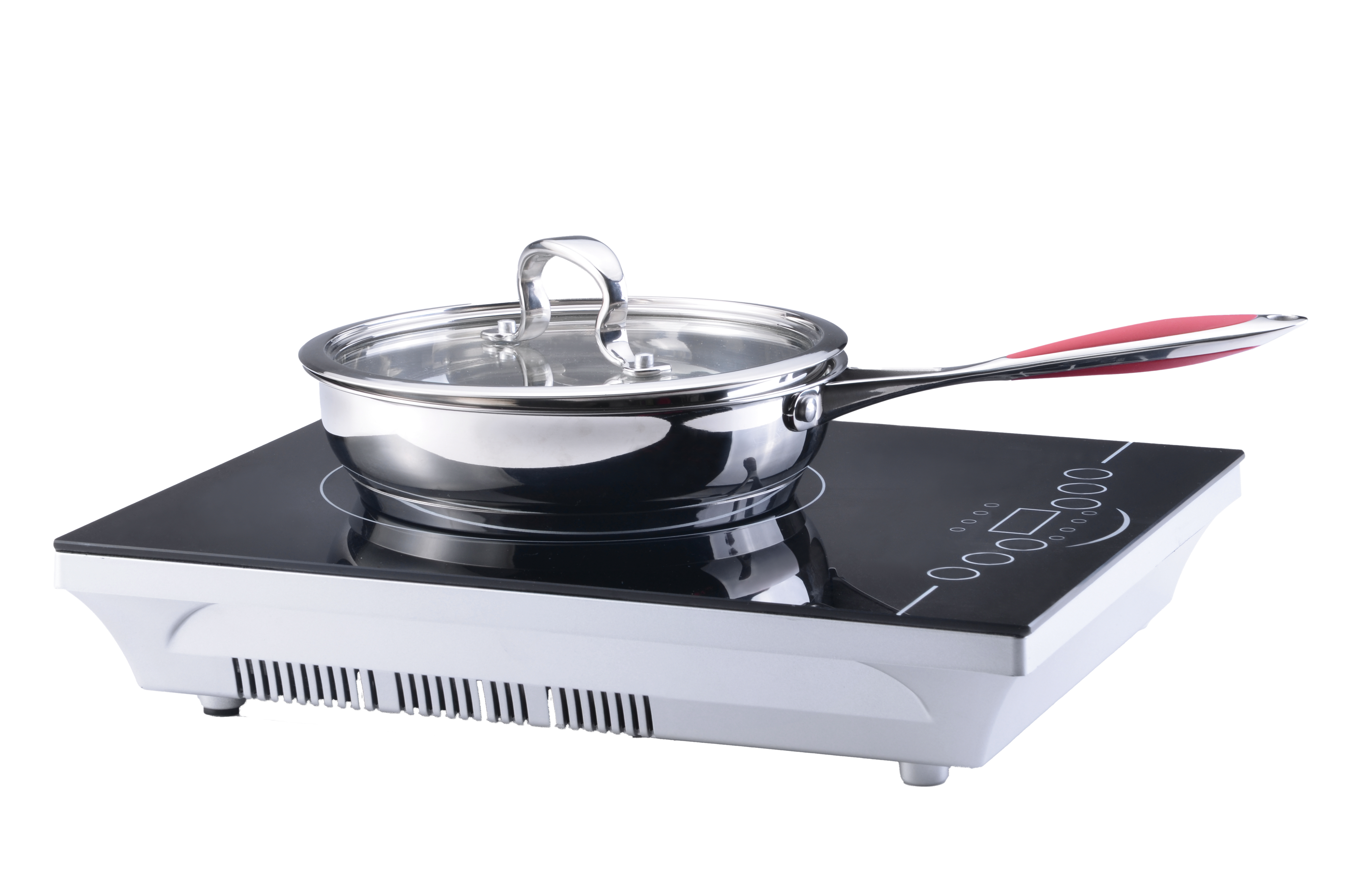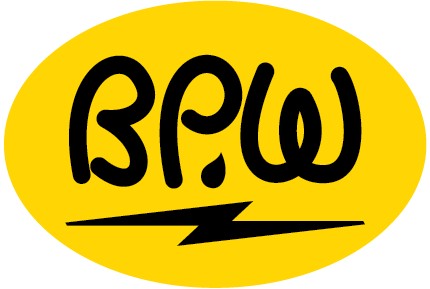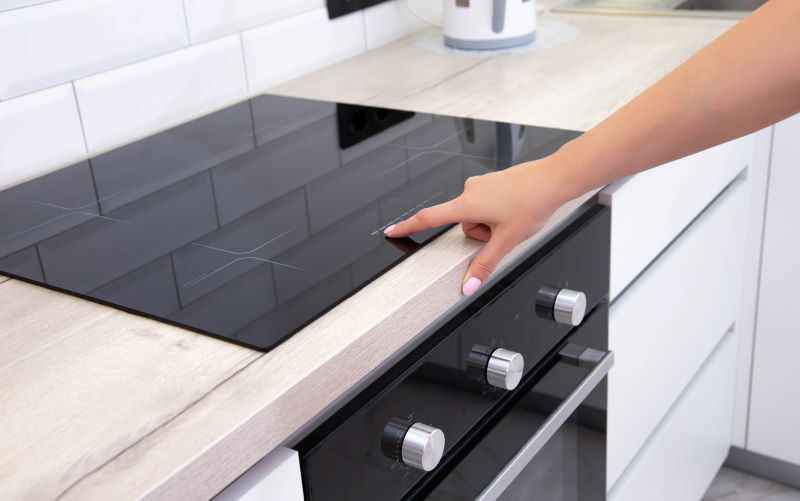Induction cooktops use less energy and are much safer to use than conventional cooktops.
How Does an Induction Cooktop Work?
Unlike traditional stovetops that use thermal conduction, induction cooktops operate by heating cookware with electromagnetic induction. Beneath the surface of the cooktop, an electric current flows through a coil and generates a magnetic field. When compatible cookware (ferromagnetic) is placed on the cooktop, the magnetic field induces an electric current within the cookware directly, rapidly heating it and the food inside. Importantly, the cooktop itself remains cool to the touch, enhancing safety. Induction cooktops offer precise temperature control, quick heating, and energy efficiency, making them a popular choice for cooking.
Why Choose an Induction Cooktop?

Switching to an induction cooktop has many advantages.
- Induction cooktops are safer and faster to use than traditional cooktops because they generate heat in the pan not the cooktop surface.
- Induction burners can’t be left on accidentally as they only work when an iron-containing pan is present.
- Induction cooktops are 5-10% more efficient than an electric resistant cooktop and up to three times more efficient than a gas cooktop.
- Switching from a gas cooktop to an induction cooktop can save over 170 pounds of carbon dioxide emissions per year.
- Removing gas appliances from your home like ovens, reduces potentially harmful indoor air emissions.
- Holland BPW has a $75 rebate on any type of induction appliance.
Which Induction Cooktop is Right For You?
Induction cooktops come in many different types and styles catering to diverse kitchen designs and user preferences.
Built-in: Built-in induction cooktops seamlessly integrate into kitchen countertops, providing a sleek, modern appearance.
Portable: Portable induction cooktops offer flexibility, allowing users to cook in different locations and easily store the appliance when not in use. These are popular for small kitchens or as an additional cooking surface. They plug into a 120 V outlet so they can be used anywhere there is electric power.
Freestanding: Freestanding induction ranges combine the cooktop with a traditional electric resistance oven.
Special Features: Cooktops may include specialized high-temperature wok cooking features.
ENERGY STAR®: If an ENERGY STAR model is not available, look for cooktops that use less than 189 kWh per year.

Special Considerations
The magnetic fields and currents generated from induction cooking are safe for the public but if you have a cardiac pacemaker check with your doctor on the safety of using an induction cooktop.
If you are switching from a natural gas freestanding range to induction, you will need a 240 V outlet. If your electrical panel needs to be upsized to handle the additional load, you may qualify for $1,000 panel rebate from Holland BPW.


